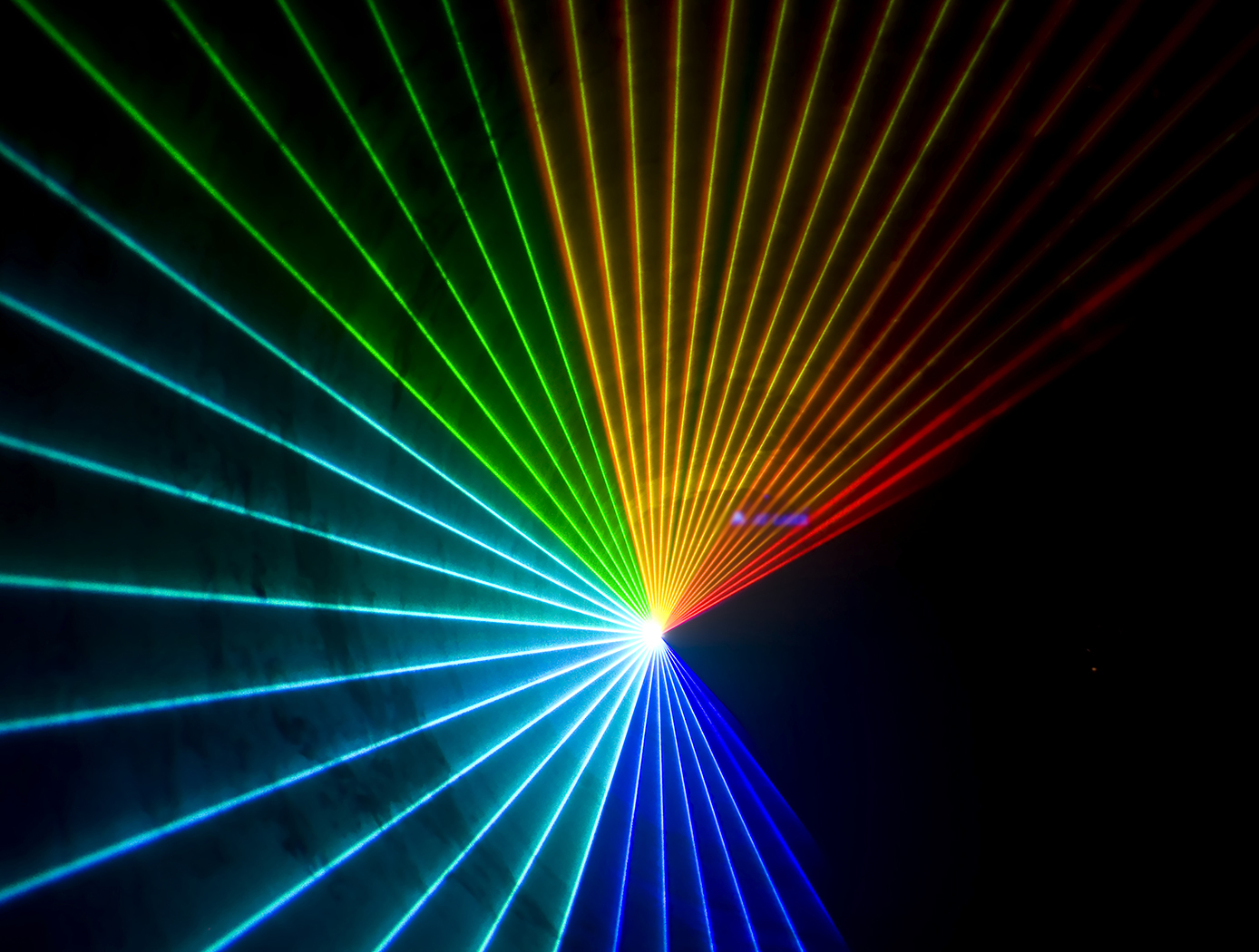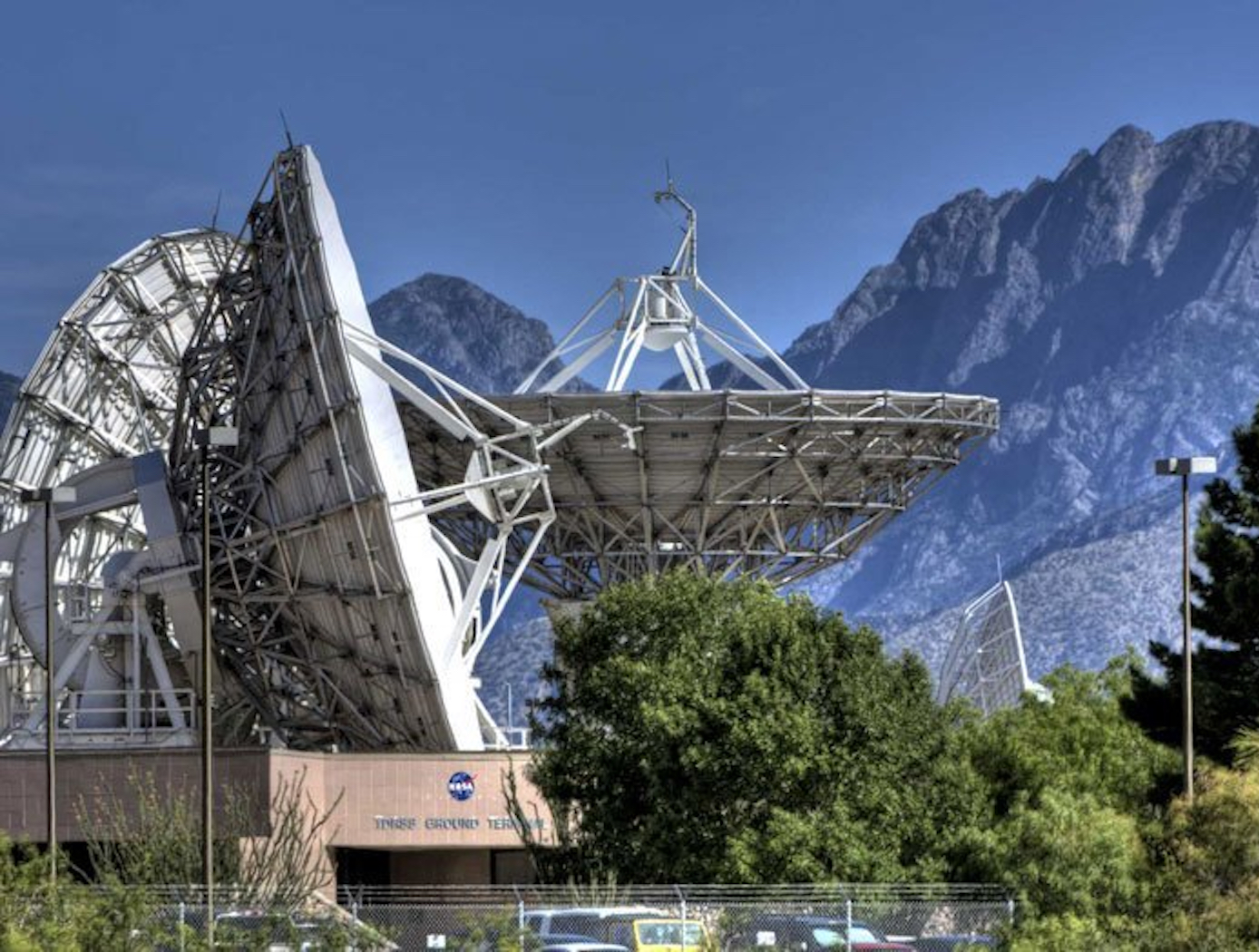Search
Communications

Optical Tunable-Based Transmitter for Multiple High-Frequency Bands
NASA Glenn's researchers have developed a means of transporting multiple radio frequency carriers through a common optical beam. In contrast to RF infrastructure systems alone, this type of hybrid RF/optical system can provide a very high data-capacity signal communication and significantly reduce power, volume, and complexity. Based on an optical wavelength division multiplexing (WDM) technique, in which optical wavelengths are generated by a tunable diode laser (TDL), the system enables multiple microwave bands to be combined and transmitted all in one unit. The WDM technique uses a different optical wavelength to carry each separate and independent high-frequency microwave band (e.g., L, C, X, Ku, Ka, Q, or higher bands). Since each RF carrier operates at a different optical wavelength, the tunable diode laser can, with the use of an electronic tunable laser controller unit, adjust the spacing wavelength and thereby minimize any crosstalk effect.
Glenn's novel design features a tunable laser, configured to generate multiple optical wavelengths, along with an optical transmitter. The optical transmitter modulates each of the optical wavelengths with a corresponding RF band and then encodes each of the modulated optical wavelengths onto a single laser beam. In this way, the system can transmit multiple radio frequency bands using a single laser beam. Glenn's groundbreaking concept can greatly improve the system flexibility and scalability - not to mention the cost of - both ground and space communications.
communications

NanoWire Glass Switch for Radio Frequency
The nanoionic-based switches developed by NASA's Glenn Research Center exploit the properties of some amorphous materials that can incorporate relatively large amounts of metal and behave as solid electrolytes. As with liquid electrolytes found in lead-acid batteries, for example, solid electrolytes consist of mobile ions which undergo oxidation/reduction reactions at the anode and cathode of the system. The ionic conductivity of such a material can be of the same order of magnitude as the electronic conductivity of a semiconductor but without the drawbacks of an electromechanical device.
In the nanoionic switch, ions are formed at an anode and migrate into the solid electrolyte, while electrons are injected from a cathode, thereby causing the growth of metal nanowires through the electrolyte from the cathode to the corresponding anode when a positive DC bias is applied. Once a nanowire has grown sufficiently to form an electrically conductive path between the electrodes, the switch is closed and no electric power is needed to maintain the connection, unlike in a MEMS or semiconductor-based switch. Moreover, the process of making the connection can easily be reversed by applying a negative bias, causing the wires to ungrow and the switch to open. Thus, NASA's state-of-the-art device is a reversible electrochemical switch that can have geometric features as small as nanometers. The process time for making or breaking the connection is very brief -- about a nanosecond. In addition, this nanoionic material can be deposited in such a way to form multilayer control circuits, which has the potential to minimize circuit footprints, reduce overall circuit losses, and provide unprecedented ease of integration.
communications

Vortex Radiometer for Wireless Communications
The Vortex Radiometer (VR) creates concentric, annular antenna beam patterns that measure sky-noise temperature. Annular antenna patterns are created by imparting orbital angular momentum into the electric field received by the antenna using spiral phase plates placed in front of the antenna aperture, generating multiple radiometer channels. Data points are then collected by plotting the measured noise temperature of each radiometer channel as a function of time. Noise temperature increases as a noise source (e.g., weather-related noise, signal interference, etc.) traverses the antenna beam patterns. An algorithm is then used to correlate noise temperature peaks in adjacent beams and to determine when a fade will occur, how long the fade will last, and how intense the fade will be. With this information, effective and efficient strategies can be implemented using cognitive communication and antenna systems to autonomously select the optimum fade-mitigation technique and parameter (e.g., increasing the transmission power, adjusting the modulation and/or coding scheme, etc.).
NASA's VR system has been prototyped, including the radiometer device and the algorithm for characterizing noise sources based on VR data. Simulations have shown that a VR system can instruct an existing cognitive antenna to switch between Ka- and X-Band communications in order to avert interference from small diameter noise sources.
Any high-performance communication systems operating in RF or optical frequencies may benefit from NASA's VR capabilities.
Communications

Integrated-Photonic Electromagnetic Signal Detector
NASA’s ESD is a small form-factor electromagnetic signal detector fabricated on a photonic crystal substrate (e.g., silicon-on-insulator wafer, III-V platform). It integrates a (1) miniature on-chip antenna (e.g., microstrip antenna) aligned to the desired operational frequency, (2) 2-D photonic crystal, and (3) electro-optic polymer (located on the photonic crystal).
At the heart of the detector is the 2D photonic crystal. Using an array of carefully sized pores or “nano-cavities,” a waveguide is formed that governs the crystal’s optical transmission properties. An electro-optic polymer (a material that shifts its refractive index in response to external electric fields) is used to coat the photonic crystal. The combination of the 2D photonic crystal and EO polymer make up the resonator.
A compact antenna with separate active feed and ground regions is placed near the photonic crystal, creating a gap through which the electromagnetic signal couples to the photonic crystal structure. Under normal conditions (no external signal), the EO polymer’s refractive index remains unchanged, producing a stable resonant notch in the device’s optical transmission. When the antenna intercepts an electromagnetic wave, the resulting electric field modifies the EO polymer’s refractive index, causing a measurable shift in the resonator’s optical output. By monitoring this shift, a photodetector can accurately determine the presence and magnitude of the incoming electromagnetic wave.
NASA’s low SWaP-C, high precision ESD can be adapted for use in a variety of systems including remote sensing instruments (e.g., radiometers, spectrometers), transceivers for 5G communications networks, and other electromagnetic signal detection applications. The invention is available for patent licensing.



